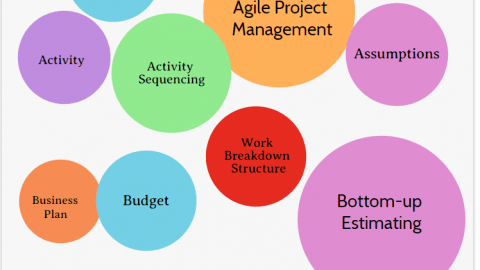Best Practices of Schedule Management
In the early years of my career, I used to report to a Project Manager. He was very particular about holding project team weekly meetings. During these meetings, we were asked many questions related to project schedule tracking. The questions used to be straight but, sometimes, it seemed that he was scolding and tormenting the team members. He would seek every small detail and go after even the tiniest bit of information. In those days, I was a learning the ropes of team management and project schedule management. Even thought, I didn’t like the way these team meetings were conducted, I understood the purpose of those meetings. I learned a lot from these meetings regarding best practices for schedule management.
Table of Contents
I respect this particular person as I have gained ample knowledge from him. His drive to stay at the top of his game led him to become an outstanding project manager. He delivered the best projects and performed a great job.
It has been more than two decades since that time but those experiences taught me the significance of periodic and regular monitoring of project schedule.
Looking back, I understand that regular and periodic monitoring of projects is essential to ensure their success. However, if I had to conduct those meetings, I would have conducted them in more amenable and friendly manner. Being courteous and considerate will not only help you to gather relevant information but also wind up the meetings quickly. It is essential to use good interpersonal skills when dealing with the members of the team.
Regular monitoring and tracking of schedule is only one of the best practices of schedule management. there are a few other. Let’s look at them in detail.
Top 7 Best Practices for Schedule Management
Here are the top seven tasks, related to project schedule management, that a project manager should accomplish in order to significantly increase the likelihood of a successful project.

1. Utilize a Planning and Scheduling Software Tool
First and foremost – you should use a scheduling tool. Period.
In my last article, I talked about the advantages of using a project management software. You should read that article to understand the importance of a project management software for scheduling. A proper software tool is essential for organizing, developing, tracking, and changing project schedule.
I have observed that many project managers do not use a scheduling tool to create and manage schedule. Most often, they prefer to use a worksheet or something similar.
Tell me – does a carpenter use stone to fix nails in the furniture?
No. he does not. Similarly, you should utilize a high-quality software for scheduling.
2. Involve Project Team Members and Other Stakeholders
The projects are done by a project team and not by a single individual. You might be leading the project but other people can help you develop and track the project schedule. It is essential to seek inputs from team members and other stakeholders while scheduling a project. This is not only a good practice for scheduling but also for motivating people – it will inspire people to contribute and make them more accountable. Last, but not the least, it will lessen your work.
3. Utilize Project Scheduling Diagrams
A schedule is not only activities and dates. You can use various scheduling diagrams to create a more effective schedule. I would recommend you to learn and use a mix of various project scheduling diagrams – Gantt Charts, Resource Usage Graphs, Network Diagrams and Project Calendars. By examining different perspectives, you will better understand your project’s schedule.
4. Analyze Schedule Dependencies
Scheduling dependencies are a vital cog of any project schedule management. Many project managers do not take into account the dependencies while developing a schedule. In fact, some of them don’t even know about various types of dependencies.
You should analyze the project network diagram, factor in all the dependencies and look for alternative paths to complete the project work. You can experiment with discretionary dependencies and project floats to optimize the project timeframe.
5. Track Project Periodically
I started this article to tell you my initial experiences with project tracking. Regular and periodic project monitoring, evaluation and tracking is essential for the project success.
The tracking time period can be single day, one week, or even a month for schedule management. The duration of the tracking period will significantly depend on the type, importance, size, length, phase, and complexity of your project as well as the preferences of the stakeholders.
You should make sure that the period is established and well documented. An official evaluation report must be completed after tracking and should be distributed to all the appropriate stakeholders.
6. Prepare and Utilize Project Baseline
Many project managers note down the dates of project tasks but forget to look at the big picture. Tracking the projects through a schedule management baseline is a standard method for measuring project’s progress.
The baseline tracking can be automated by using a proper scheduling tool. It helps in comparing the factual information (dates and expenditures, efforts and so on) to the established benchmark. In-depth comparative data analysis can result in better managing the project’s schedule.
7. Manage Critical Path of the Project
If you don’t know how to determine the critical path of the project, watch this video to gain insights!
Critical path is the longest path with the lowest total float.
It is generally believed that the critical path of a project is static but it is not so. Critical path changes as you start tracking the project. Furthermore, there could be more than one path in the project that are of equal duration; making all of them critical paths.
You should always keep a sharp eye on the project’s critical path and manage it continuously for schedule management. Depending on the progress of your project, critical path may alter any one of the following:
- Project duration – it could be shortened or extended.
- New critical paths may be created.
- Old critical path may cease to exist as a critical path.
The project manager must check the critical path closely and take action to manage it.
Over to you: Best practices for project schedule management
What has been your experience with the project team meetings? What is the periodicity of your project team meetings?
Which all best practices do you employ in your projects? Do you know of any other practices that can help the readers?
Praveen Malik, PMP, has two-plus decades of experience as a project management instructor and consultant. He regularly conducts project management workshops in India and abroad and shares his project management thinking in his eponymous blog PM-by-PM.










